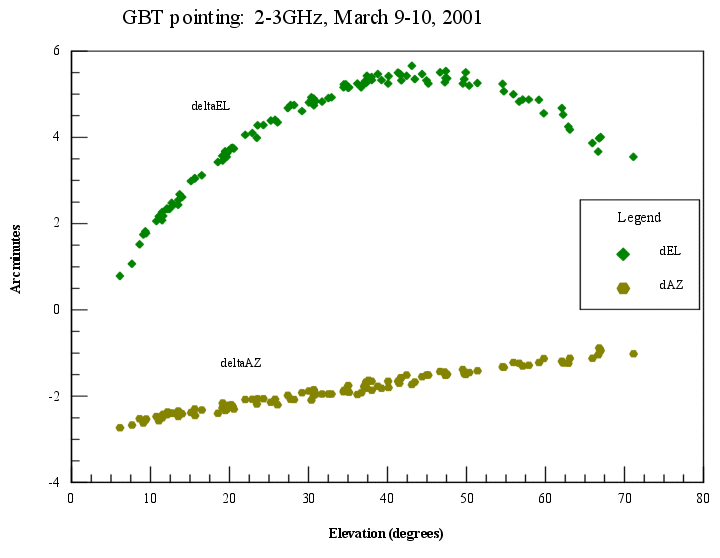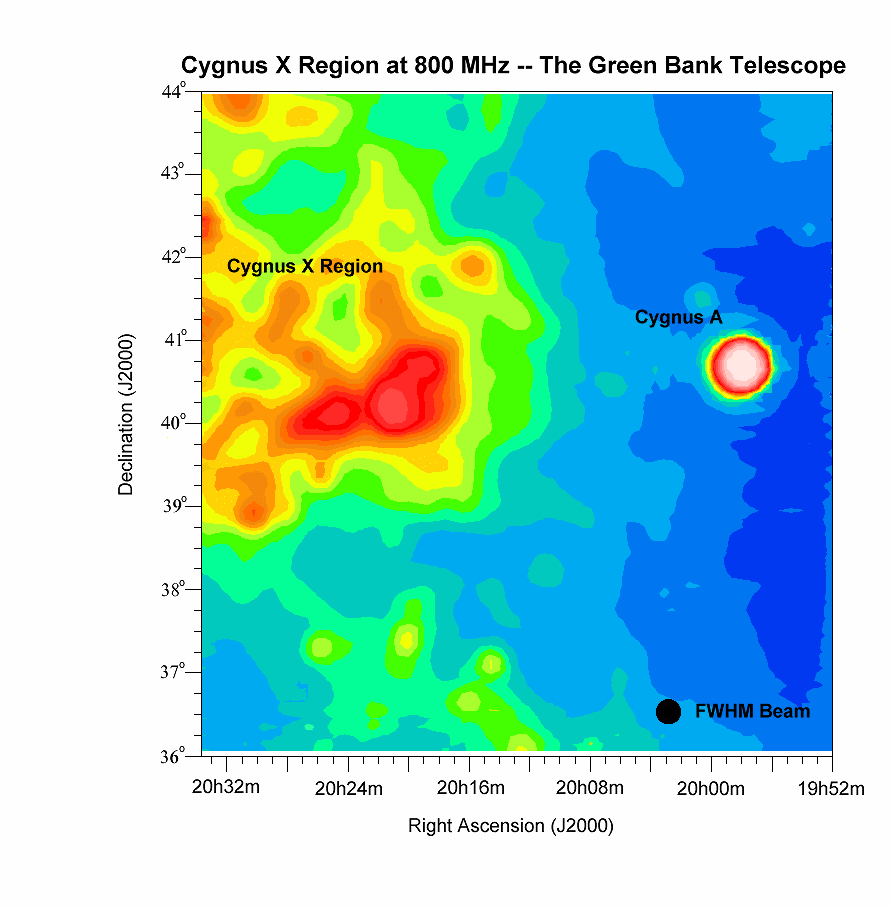
GBT Status Update
12 March 2001
The past week's commissioning work has been devoted to S-band pointing and focus observations. Although the telescope has been used only at low frequencies, all indications are that the telescope has very good mechanical performance. The first full-sky pointing run was conducted on March 9-10, and the measured offsets (delta_El and delta_Az) as a function of elevation angle are shown in Figure 1. The residuals using simple fits (not the full telescope pointing model) are about 8 arcsec rms in each axis. The curves are well fit with simple terms, indicating that the coefficients for higher order terms are small. The perpendicularity of the azimuth axis and the mechanical collimation of the azimuth and elevation axes appear to be excellent.

Figure 1: S-band pointing offsets on the GBT (March 9-10, 2001) as a function of elevation angle.
Focus curves in the radial and lateral (in the symmetry plane of the telescope) directions as a function of elevation angle were also measured and follow simple geometric patterns corresponding to the gravitational flexure of the feedarm. These curves are accurate enough for observations to 12 GHz. We are thus well on our way to achieving Phase I commissioning goals.
In other news, the azimuth encoder failed last week and was replaced with a spare. The failed encoder will be sent off for repair by the manufacturer. Measurements were made on the IF stability over the fiber optic link as a function of telescope motion. Preliminary results showed no correlation of stability with motion in either axis. This week, work on the azimuth track by the contractor is proceeding. One section of the wear strips is being secured with larger (1.5 in) dowels. Motion of the segment will be measured again as the azimuth wheels pass over them. Later this week, the segments will be shimmed to further reduce motion. If these efforts prove successful, the remaining wear strip segments will be secured in the same manner.
Preparations are underway for the first true, scientific observations on the GBT, a radar interferometry observation of Venus in conjunction with Arecibo Observatory. This observation is planned for 24 March 2001.
Late last month, a continuum image of the Cygnus X region at 800 MHz was obtained with the GBT by the commissioning team, led by Ron Maddalena. The image is displayed below as Figure 2.

Figure 2. 800 MHz continuum image of the Cyg X region.
P. R. Jewell
M. M. McKinnon